In this article, you will get an overview of cross-sectional research with examples.
What is Cross-Sectional Research?
Cross sectional research is a type of observational research that involves studying subjects at a single point in time. This type of research is used to collect data on a population, and is often used to study trends or changes over time. Cross sectional research can be conducted using both qualitative and quantitative methods.
Cross sectional research is a study in which people are asked about their health status and behaviors at a single point in time.
This type of research is used to understand the prevalence of diseases and risk factors in a population.
Cross sectional research can be conducted using:
- surveys
- interviews
- medical records
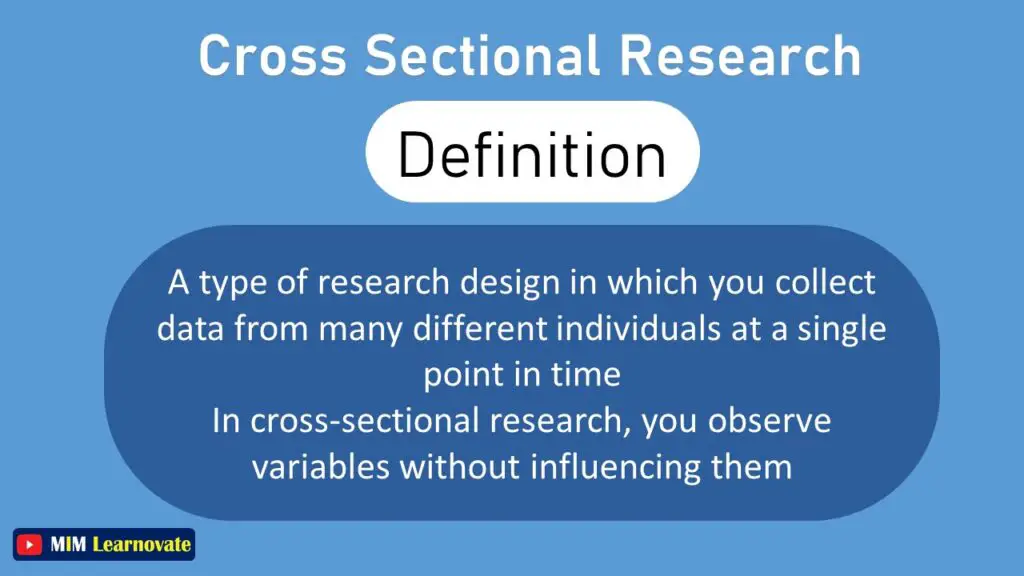
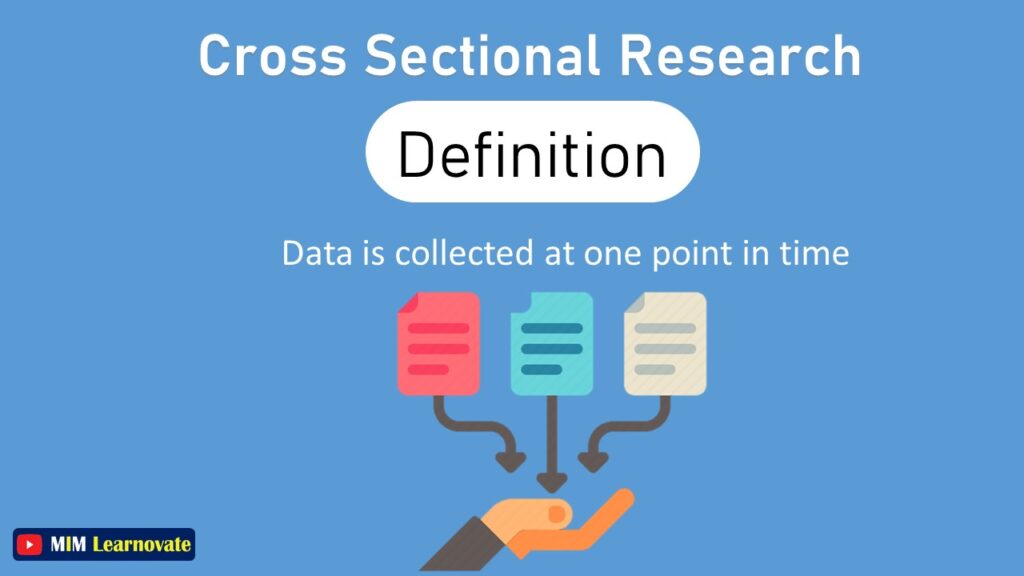
This type of research is often used to study rare diseases or risk factors that are not easily measured in other ways.
Cross Sectional research design is a kind of research design that involves gathering information from a large number of people all at once. You observe variables in cross-sectional research without affecting them.
Cross sectional research has some limitations, including the possibility of recall bias and selection bias. However, it can be a useful tool for understanding the health of a population.
Example
For instance, developmental psychologists may choose groups of individuals of various ages but examine them at a certain period in time. By doing this, it is possible to assume that any disparities between the age groups are due to age differences rather than changes that occurred throughout time.
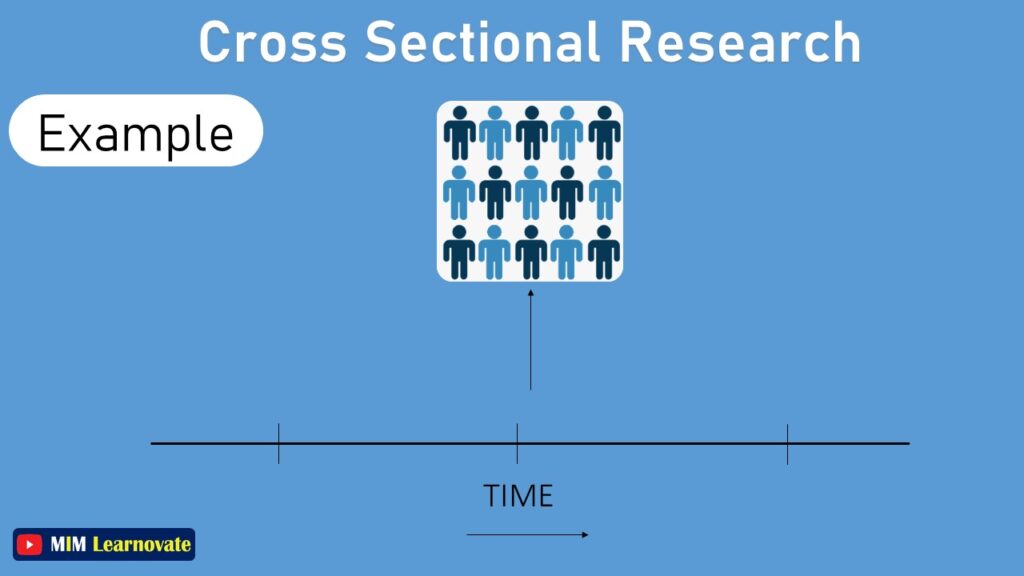
Types of Cross-Sectional Research
Cross-sectional research can be used for both descriptive and analytical purposes:
Descriptive research
Descriptive research is a type of cross-sectional research that is used to describe a population. A descriptive study uses solely descriptive statistics to represent the outcome. Descriptive research is a type of cross-sectional research that involves observing and describing data.
Descriptive research is used to
- collect data on a specific group of people, such as students in a classroom or patients in a hospital.
- study human behavior, as it can provide insight into how people think and behave.
- answer questions about the characteristics of a population, such as their age, gender, or income.
This type of research is important for understanding the makeup of a population and can be used to inform decision-making.
Example:
A researcher may use descriptive research to study the effects of a new product on consumer behavior.
Analytical research
Analytical research is a type of cross-sectional research that involves the use of analytical methods to examine data. An analytical investigation seeks to explain how or why a particular result might take place.
Analytical research is used to
- examine relationships between variables, trends over time, and other aspects of data.
- answer questions about how a certain phenomenon works, what factors influence it, and so on.
This type of research is often used to Analytical research can be used to
Example:
Analysts may use analytical research to understand why customers are more likely to purchase certain products or services.
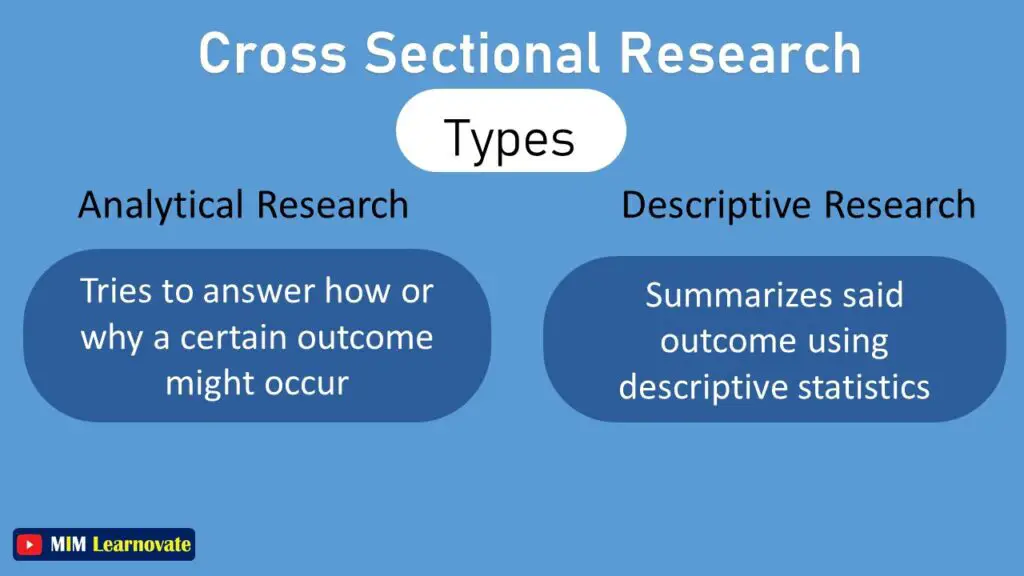
Cross-sectional Research Examples
Cross sectional research is a type of observational study that involves taking measurements of different individuals at the same point in time. This type of research is often used in business, healthcare, education, and psychology.
Retail
A retail business might use cross-sectional research to study customer satisfaction levels across different age groups.
Some common retail examples that have been studied in cross-sectional research include grocery stores, convenience stores, department stores, and online retailers. Each of these types of retailers has different strengths and weaknesses that can be explored through cross-sectional research.
For example, grocery stores typically have high sales volumes but low margins, while convenience stores have lower sales volumes but higher margins. Department stores tend to have a mix of high and low sales volumes, depending on the department. Online retailers typically have high margins but low sales volumes.
Each type of retailer has different implications for businesses.
Healthcare
A healthcare organization might use cross-sectional research to assess the health outcomes of patients with different chronic conditions.
Cross-sectional studies can be used to assess the prevalence of a disease or exposure in a population. This information can be used to plan public health interventions. Second, because data are collected at one point in time, confounding variables that change over time (e.g., age, lifestyle) can be controlled for in the analysis. Finally, cross-sectional studies can be used to identify risk factors for diseases or other outcomes of interest.
One example of cross-sectional research in healthcare is a study on the prevalence of obesity among adults in the United States. This study would involve collecting data on the weight and height of a large number of adults, and then calculating the obesity rate.
Another example is a study on the incidence of heart disease among people who smoke cigarettes. This study would involve tracking a group of smokers over time to see how many develop heart disease.
Business
Cross sectional research is often used in business settings to gather information about customer demographics, market trends, and product preferences.
This type of research can be used to inform marketing decisions, product development, and strategic planning.
Education
An educational institution might use cross-sectional research to compare the academic achievement of students from different socioeconomic backgrounds.
There are many different ways to conduct cross-sectional research in education. For example, researchers may choose to survey a group of students about their academic experiences or observe classrooms to identify teaching practices that are effective.
Data collected from cross-sectional studies can be used to inform educational policy and practice. For example, if a survey reveals that a significant number of students are struggling with a particular subject, steps can be taken to improve the curriculum or provide additional support for those students.
Overall, cross-sectional research is a valuable tool for understanding the current state of education and identifying areas where improvements can be made.
Psychological
This type of research is often used in psychology to study how different demographics (e.g., age, gender, race) affect psychological constructs (e.g., personality, cognition, mental disorders).
A psychologist might use cross-sectional research to examine the relationship between anxiety and depression in adults.
One example of cross sectional research in psychology was a study conducted by psychologists John and Sylvia Rieder. In their study, they looked at how the personalities of children changed as they got older. They found that some personality traits became more pronounced as children got older, while others became less pronounced.
Another example of cross sectional research in psychology was a study conducted by psychologist David Laibert. In his study, he looked at how the cognitive abilities of children changed as they got older.
How to conduct Cross-sectional research?
There are many different ways to conduct cross sectional research.
- One common method is to survey a large group of people and ask them about their opinions or experiences.
Surveys can be administered in person, by phone, or online. They are typically used to collect data on a variety of topics such as consumer behavior, product preferences, and attitudes towards a company or brand.
- Second way to conduct cross-sectional research is through analysis of secondary data sources.
This could involve analyzing data from customer transaction records, social media posts, or other publicly available data sets. This type of research can be used to understand patterns and trends in customer behavior or to track changes over time.
- Another way to collect data is to observe people in their natural environment, such as in a classroom or workplace setting.
Advantages
There are several advantages of using a cross-sectional study design.
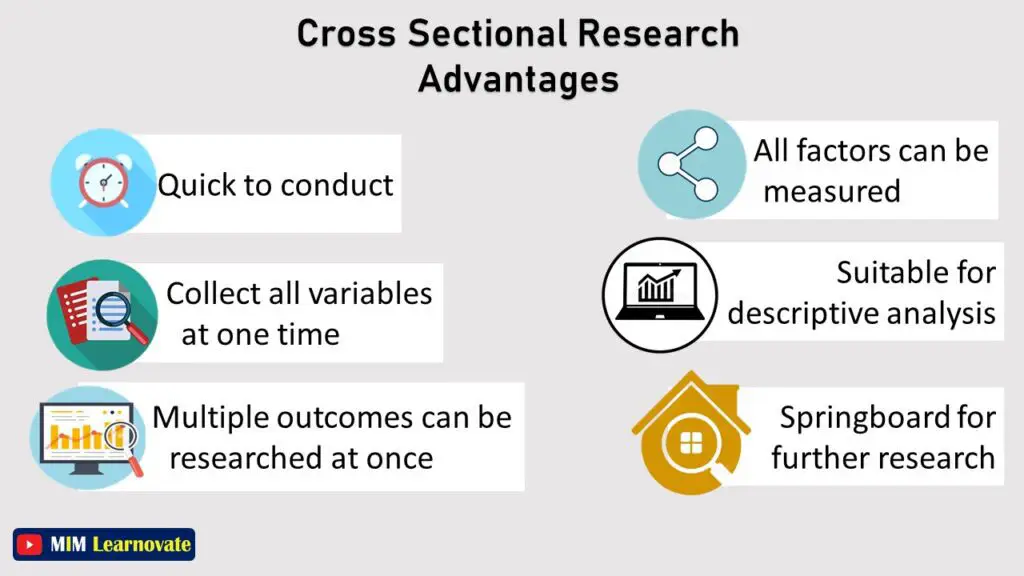
- Quick and easy to collect data
- All factors can be gathered at once by researchers.
- Multiple outcomes may be investigated simultaneously.
- All factor prevalence can be calculated.
- In line with descriptive analysis.
- It can serve as a starting point for more investigation by researchers.
- Less expensive
- Provide a more complete picture of a population than other types of studies.
Disadvantages
- Only provides snapshot information about a population at one point in time.
- Difficult to establish cause and effect relationships with this type of research.
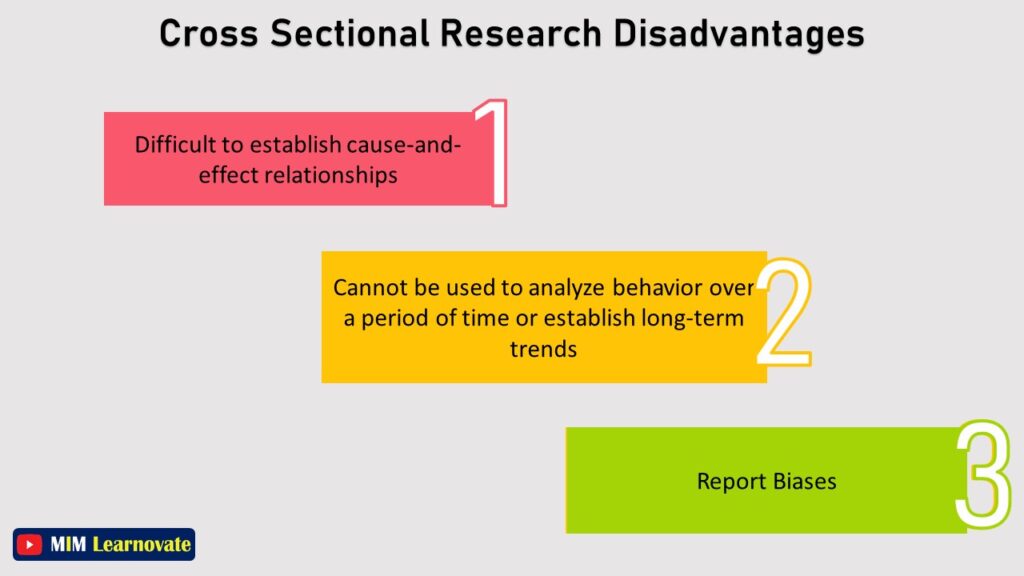
Cross-sectional studies simply reflect a single measurement of the stated cause and effect, making it challenging to demonstrate cause-and-effect linkages. You need to conduct a longitudinal research or an experimental study to look at cause and effect.
- Cannot be used to identify long-term trends or assess behavior across time.
As Cross-sectional studies can only examine a single point in time.
- Can be biased because the data is collected at a single point in time.
which means that any changes that occur over time cannot be captured. This can make it difficult to determine whether the results are due to the intervention or other factors.
Other articles
Please read through some of our other articles with examples and explanations if you’d like to learn more.
Statistics
- PLS-SEM model
- Principal Components Analysis
- Multivariate Analysis
- Friedman Test
- Chi-Square Test (Χ²)
- T-test
- SPSS
- Effect Size
- Critical Values in Statistics
- Statistical Analysis
- Calculate the Sample Size for Randomized Controlled Trials
- Covariate in Statistics
- Avoid Common Mistakes in Statistics
- Standard Deviation
- Derivatives & Formulas
- Build a PLS-SEM model using AMOS
- Principal Components Analysis using SPSS
- Statistical Tools
- Type I vs Type II error
- Descriptive and Inferential Statistics
- Microsoft Excel and SPSS
- One-tailed and Two-tailed Test
- Parametric and Non-Parametric Test
Citation Styles
Comparision
- Independent vs. Dependent Variable – MIM Learnovate
- Research Article and Research Paper
- Proposition and Hypothesis
- Principal Component Analysis and Partial Least Squares
- Academic Research vs Industry Research
- Clinical Research vs Lab Research
- Research Lab and Hospital Lab
- Thesis Statement and Research Question
- Quantitative Researchers vs. Quantitative Traders
- Premise, Hypothesis and Supposition
- Survey Vs Experiment
- Hypothesis and Theory
- Independent vs. Dependent Variable
- APA vs. MLA
- Ghost Authorship vs. Gift Authorship
- Basic and Applied Research
- Cross-Sectional vs Longitudinal Studies
- Survey vs Questionnaire
- Open Ended vs Closed Ended Questions
- Experimental and Non-Experimental Research
- Inductive vs Deductive Approach
- Null and Alternative Hypothesis
- Reliability vs Validity
- Population vs Sample
- Conceptual Framework and Theoretical Framework
- Bibliography and Reference
- Stratified vs Cluster Sampling
- Sampling Error vs Sampling Bias
- Internal Validity vs External Validity
- Full-Scale, Laboratory-Scale and Pilot-Scale Studies
- Plagiarism and Paraphrasing
- Research Methodology Vs. Research Method
- Mediator and Moderator
- Type I vs Type II error
- Descriptive and Inferential Statistics
- Microsoft Excel and SPSS
- Parametric and Non-Parametric Test
Research
- Table of Contents
- Dissertation Topic
- Synopsis
- Thesis Statement
- Research Proposal
- Research Questions
- Research Problem
- Research Gap
- Types of Research Gaps
- Variables
- Operationalization of Variables
- Literature Review
- Research Hypothesis
- Questionnaire
- Abstract
- Validity
- Reliability
- Measurement of Scale
- Sampling Techniques
- Acknowledgements
- Research Methods
- Quantitative Research
- Qualitative Research
- Case Study Research
- Survey Research
- Conclusive Research
- Descriptive Research
- Cross-Sectional Research
- Theoretical Framework
- Conceptual Framework
- Triangulation
- Grounded Theory
- Quasi-Experimental Design
- Mixed Method
- Correlational Research
- Randomized Controlled Trial
- Stratified Sampling
- Ethnography
- Ghost Authorship
- Secondary Data Collection
- Primary Data Collection
- Ex-Post-Facto




2 Comments
Dear mimlearnovate.com administrator, Your posts are always well-cited and reliable.
Hi mimlearnovate.com owner, You always provide clear explanations and step-by-step instructions.